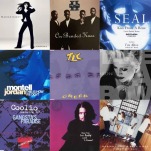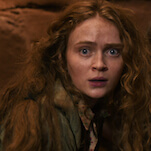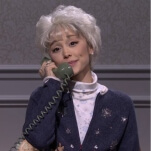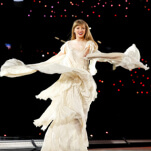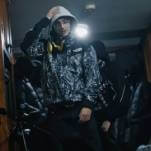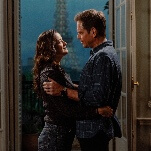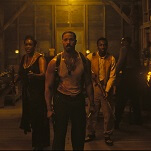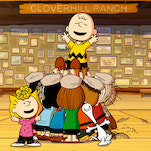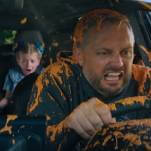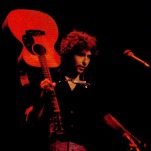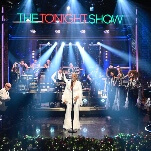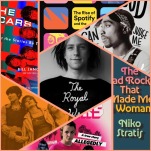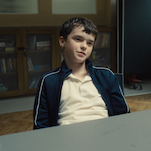Bride & Prejudice weaves an impressive cultural critique into a Bollywood-inspired Jane Austen update
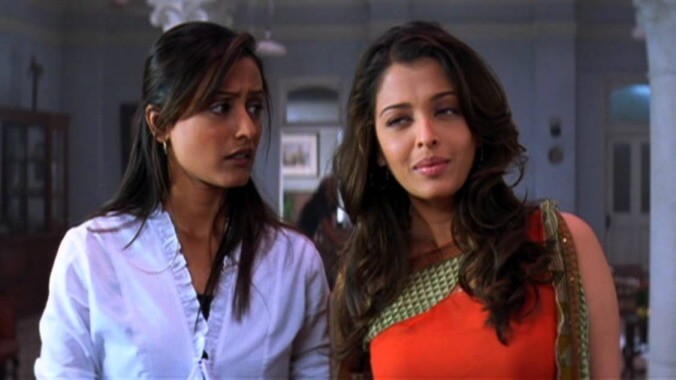
There’s good news and bad news for American rom-com fans sick of rewatching the same Meg Ryan and Julia Roberts vehicles over and over again: The good news is that Bollywood—Mumbai’s booming Hindi-language film industry—has literally thousands of romantic comedies just waiting to be discovered. The bad news is that it can be a a little intimidating to dive into a new, unfamiliar cinematic world for the first time. For her 2004 passion project Bride & Prejudice, writer-director Gurinder Chadha set out to bridge that gap and make Bollywood accessible to Western audiences. And she did so by embracing her own diverse cultural heritage. Raised in London after being born in Kenya to Indian parents, Chadha decided to blend the ultimate British novel, Jane Austen’s Pride And Prejudice, with the filmmaking style she’d grown up loving. The result is a joyful, goofy musical romantic comedy with some surprisingly weighty ideas lurking just beneath its glitzy surface.
Chadha had previously tried to get a Bollywood pastiche off the ground in 1996, but it fell through due to disagreements about tone. Following the unexpected success of her 2002 film Bend It Like Beckham—which grossed $76.6 million on a $6 million budget and proved to be a bit of a cultural phenomenon, especially in Britain—Chadha finally had the clout to bring her dream project to life (although Bride & Prejudice was still produced for a modest $7 million). Chadha’s interest was first and foremost in celebrating Bollywood, and the idea of adapting Jane Austen came second. As she told The Telegraph, “Pride And Prejudice is a universal love story that’s sort of familiar to people. So they can sit back, not worry they’re going to miss the story, and just get into a different film language.” Indeed, though Bride & Prejudice stays largely faithful to its source material, Austen’s enemies-to-lovers story is a familiar template even for those who don’t know the novel.
For those who do, however, Bride & Prejudice is a real treat. Unlike Bridget Jones’s Diary, which takes Pride And Prejudice as the loosest of source material, Bride & Prejudice brings most of the novel’s major characters and storylines to life with both a modern and cross-cultural twist. Chadha’s big hook for the film is that Regency era England and contemporary small-town India share a lot of similarities, particularly when it comes to mothers eager to make good marriage matches for their daughters. The Indian city of Amritsar stands in for the Hertfordshire countryside, and the Bennet family are reimagined as the Bakshi family. Mr. and Mrs. Bakshi (Anupam Kher and Nadira Babbar, respectively) have four unmarried young daughters—gentle Jaya (Namrata Shirodkar as the Jane figure), outspoken Lalita (Aishwarya Rai as the Lizzy figure), quirky Maya (Meghna Kothari as the Mary figure), and rebellious Lakhi (Peeya Rai Chowdhary as the Lydia figure). (The movie cuts the second-youngest Bennet daughter, Kitty, who mostly just functions Lydia’s sidekick.)
One of the movie’s cleverest adaptation choices is to update the all-important balls from the novel into Indian wedding celebrations, which also double as an excuse to bring the film’s multicultural cast together. Bride & Prejudice is a love letter both to India as a country but also to Indian people living all over the world. As Chadha observed, “Most Indian families are spread around the globe. When Paul [Mayeda Berges, Chadha’s husband and collaborator] and I got married, my relatives came from Kenya, India, Australia, America. It was the same when my dad died. It’s the very nature of Indian life, the way we move from country to country. That was an element I wanted to focus on in the film.” To reflect the modern day Indian diaspora and tell a truly multicultural story, Chadha set her film in three different countries—India, the U.K., and the United States.
As Bride & Prejudice opens, a wedding has sent Amritsar into a celebratory tizzy and brought some foreign guests into town, including successful British-Indian barrister Balraj (Naveen Andrews as the Mr. Bingley figure), his sister, Kiran (Game Of Thrones’ Indira Varma as the Caroline Bingley figure), and their white American friend Will Darcy (Martin Henderson), a wealthy hotelier who’s immediately overwhelmed by his first visit to India. Darcy doubles as a stand-in for Western audiences unfamiliar with Indian culture, or, more specifically, unfamiliar with the tropes of Bollywood filmmaking. Bride & Prejudice quickly dives into heightened reality with its opening boys vs. girls musical number “Balle Balle,” during which Naveen Andrews transforms into the “Indian MC Hammer” and looks like he’s having more fun than anyone has ever had on film. Kiran starts by explaining the number to Darcy, initially translating its lyrics into English. From that point on, Bride & Prejudice becomes a full-on musical, one that blends Bollywood traditions with American movie musical ones.
In addition to maintaining the focus on class and gender from Austen’s original novel, Bride & Prejudice is even more interested in race and culture. When Darcy and Lalita first butt heads, it’s because his attempts at small talk are filled with casual condescension towards India. He doesn’t understand how business gets done with the city’s imperfect infrastructure, and he finds the idea of arranged marriages “backwards.” Lalita’s quick to call out his complaint as a cliché and note that modern day arranged marriages are more of a “global dating service” than something forced on children by their parents. Bride & Prejudice creates a pitch perfect depiction of casual American arrogance in Darcy’s thoughtless cultural insensitivity, but the movie’s also sympathetic to the fact that Darcy is overwhelmed at being thrust into a big, loud celebration on his very first day in a new country. The best Pride And Prejudice adaptations recognize there’s an element of social awkwardness that fuels the behavior that makes Mr. Darcy seem standoffish and arrogant. Bride & Prejudice gets that just right.
Unfortunately, that’s about the only element of Will Darcy that Martin Henderson gets right. His casting is the single biggest misstep of the film, a bizarre holdover from a time when the New Zealand actor made a brief run at being a Hollywood leading man (he played a supporting role to Naomi Watts in The Ring and starred in the 2004 racing action film Torque, opposite Ice Cube). When it comes time to sell Darcy’s transformation to selfless romantic hero, Henderson mostly just stares in wide-eyed confusion. It could simply be a bad casting choice (Chadha described Henderson as an “old-fashioned matinee idol” who could sell the film’s Bollywood-appropriate chaste romance), but I also think the rom-com genre in general suffers from the fact that male actors are so spoiled for choice in the film industry that the truly talented ones don’t have to take supporting roles in female-led films in the way that uber-talented women often do in male-led ones.

